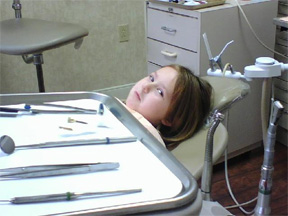January 10th, 2010 by Nancy Brown, Ph.D. in Better Health Network, Research
No Comments »


According to a study by researchers at Columbia University, teens whose parents let them go to bed past midnight were 24 percent more likely to be depressed and 20 percent more likely to have contemplated suicide than peers whose parents set bedtimes at or before 10 p.m.
The results were reported in the journal Sleep, and suggest earlier bedtimes may be protective because they increase the likelihood of getting enough sleep. According to the Centers for Disease Control & Prevention (CDC), about 4,400 Americans between the ages of 10 and 24 commit suicide each year, making it the third-most common cause of death in the age group. This is also to be the group getting the least amount of sleep, which suggests a pretty logical correlation between suicide and lack of sleep.
Data from this study comes from 15,659 U.S. students, who were in grades seven to 12 between 1994 and 1996, and their parents. Seven percent of the teens were found to have depression and 13 percent said they seriously contemplated suicide during the preceding 12 months. The association was stronger for girls and older children. Read more »
This post, Teens, Sleep, Depression And Suicide, was originally published on
Healthine.com by Nancy Brown, Ph.D..
January 10th, 2010 by Stanley Feld, M.D. in Better Health Network, News, Opinion
1 Comment »

Cecelia and I just finished watching the movie Food Inc. It is a movie worth watching.

I was upset seeing the abuse of our food chain by big food corporations. There is little respect for America’s food safety.
America’s obesity epidemic is caused, in part, by the food industry’s ability to produce cheap food. Fifty years ago, when I was at Columbia College, the solution to America’s impending food shortage was debated. The predication was the nation was going to face a food shortage in the next 50 years. Read more »
*This blog post was originally published at Repairing the Healthcare System*
January 2nd, 2010 by Nancy Brown, Ph.D. in Better Health Network, Health Tips
No Comments »


The How I Look Journal was designed for middle school girls in 2007 (revised in 2009), and has been used primarily in group settings, although girls can use it by themselves. Counselors and therapists tend to use the topics as a basis for discussions and teachers prefer using the journal in lesson formats. There is also a companion journal (2009) for mothers called “How I Look at my Daughter, Her World, and Her Future.”
Given I had the week off I decided to review the copies I was sent and am delighted to say that my teenage daughters and I thought the journals are a great idea. The journal prompts help girls identify and celebrate their inner strengths and attributes, manage stress, accept their bodies and dream!
I found myself thinking that the self-talk section was very important as parents cannot hear what teens are saying to themselves in their own heads. We would like to believe that our kids are affirming their healthy and positive decisions and characteristics, but the reality may be that they are using “bully talk” to themselves, saying things like “I am dumb, ugly inconsiderate, mean …” These negative statements undermine their self-confidence, but are difficult to change, especially if they are reinforced by comments parents (inadvertently) make when annoyed.. Read more »
This post, Teen Girls And The “How I Look Journal”, was originally published on
Healthine.com by Nancy Brown, Ph.D..
December 31st, 2009 by Dr. Val Jones in True Stories
No Comments »
Sometimes a picture’s worth 1000 words. Poor kid. My sister-in-law snapped this photo today. Not a fun way to enter a new year… I think we’re all feeling a little bit like this, with the economy “messed up” and record unemployment levels. Let’s hope that 2010 brings some relief!

December 30th, 2009 by Nancy Brown, Ph.D. in Better Health Network, News, Research
No Comments »


This is a very scary reality. A recent study from the Indiana University School of Medicine suggests that half of young urban women will get a sexually transmitted infection (STI) shortly after sexual debut, while screening typically begins years later.
Researchers conducting the eight -year study found that by age 15, 25 percent of the adolescents in the study had acquired an STI, half within two years, and most often Chlamydia. The results also reflect a high repeat infection rate, with 25 percent of the teens getting at least one reinfection or other STI within 4 to 6 months.
The results, published in the Archives of Pediatrics & Adolescent Medicine call for health practitioners to inquire about sexual activity and screen teens, preferably every 3 to 4 months.
This post, Half Of Teens Contract A Sexually Transmitted Disease Within 2 Years Of First Having Sex, was originally published on
Healthine.com by Nancy Brown, Ph.D..
















